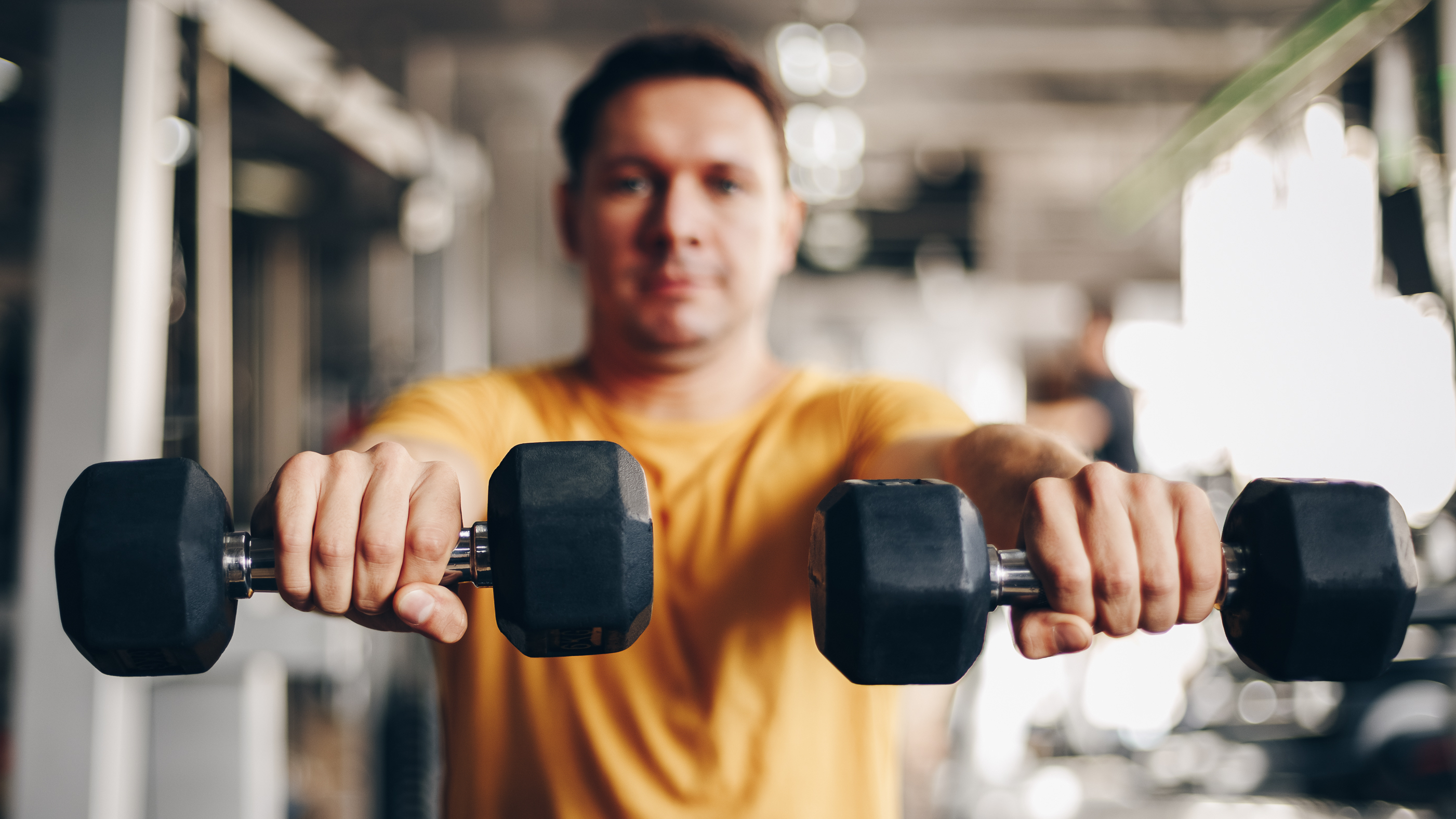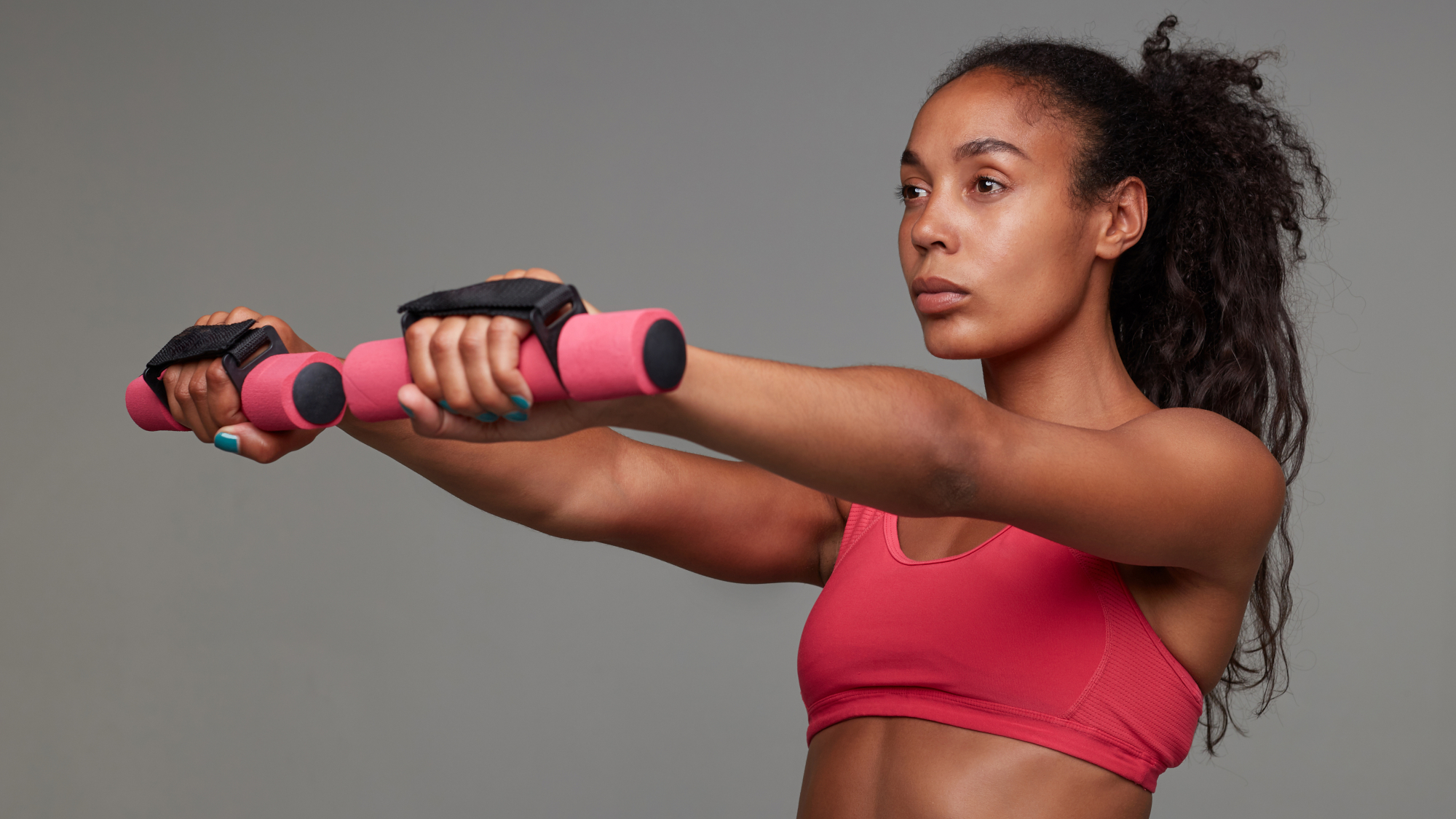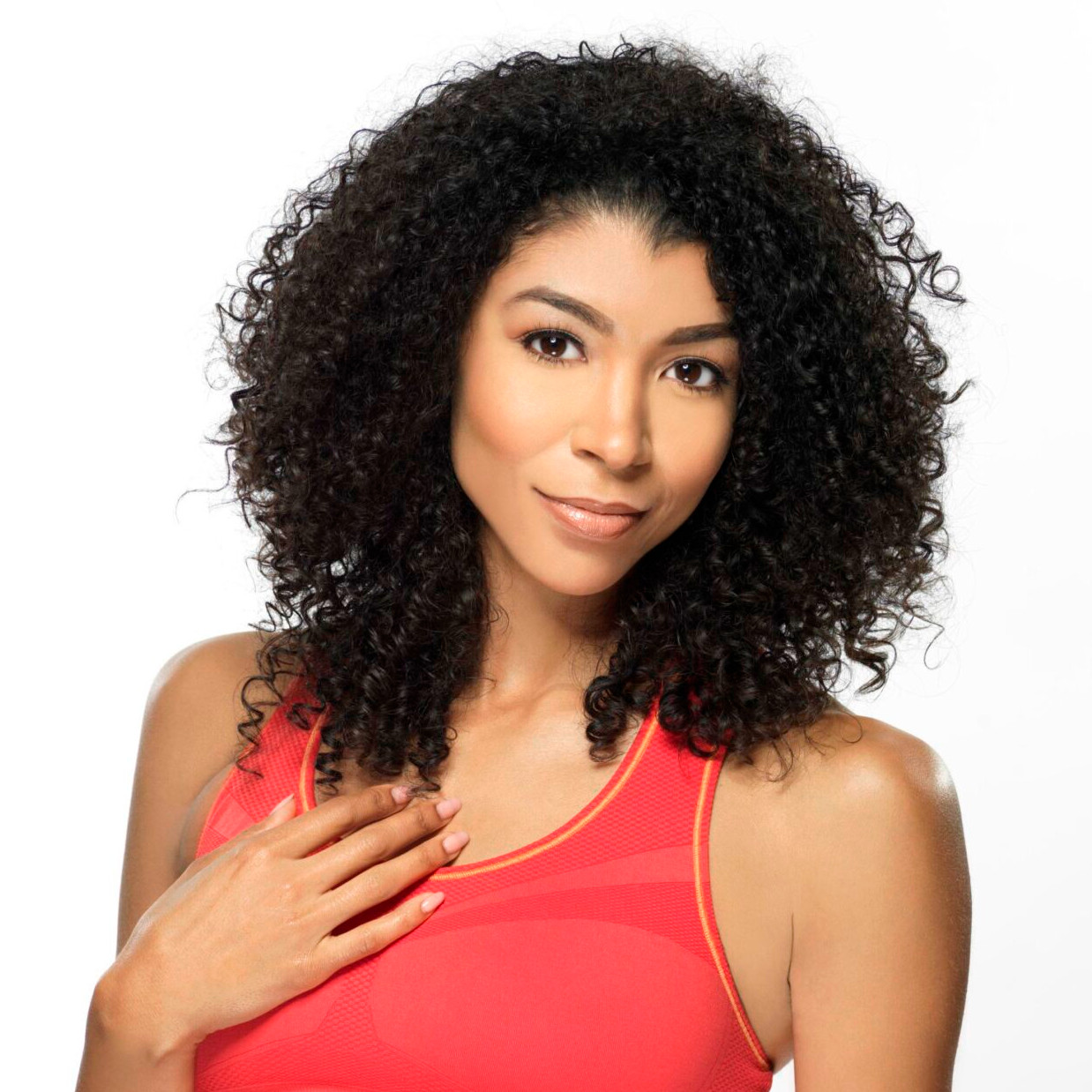How To Do The Front Raise Exercise
When it’s time to work your shoulders, find a pair of dumbbells and break out the front raise

It is hard to imagine a well-rounded upper-body workout routine without the front raise. It is a true exercise staple for improving shoulder strength and mobility, and one of the best shoulder exercises for targeting the front delts. On top of that, front raises can be very effective even when using light weights or resistance bands. If you’re a beginner, you can just as easily do them with cans, bottles and other small everyday items. Even if you’re a seasoned gym-goer, a light pair of dumbbells will be enough to give your shoulders a tough workout.
However, it is essential to know how to do the front raise correctly. This movement may seem easy, but it’s also easy to perform poorly. Using weights that are too heavy, failing to engage your core or swaying to generate momentum may hinder your attempts to train your front delts. You can also set yourself up for poor posture and painful shoulder injuries if your form is not on point.
So how to master the front raise? We asked Kern Alexander and Noelle McKenzie, certified personal trainers at Leading Edge Personal Trainers in New York City, and James Sprague, a CrossFit Games athlete, for training tips and advice so you can get the best possible results.
What muscles does the front raise work?
Front raises primarily target the anterior (front) deltoid, a small triangular muscle that sits at the front of your shoulder. Its main role is to flex the shoulder and move your arm forward. Without it, you would struggle to reach for an item on a supermarket shelf or even put on a T-shirt. To a lesser degree, front raises work your lateral (middle) deltoids, the muscle responsible for abducting your arm (moving it to the side) and protecting your shoulder joint when carrying a heavy load.
The trapezius, a large muscle that covers most of the upper mid-back and the base of the neck, is also engaged during front raises. This exercise will also hit your pecs, the large thick muscle that sits on top of your rib cage. Although these muscles are not directly involved in the movement, they take part in stabilizing the shoulder blades and preventing strain on the shoulder joint.
In addition, standing front raises challenge your core strength and stability, so you will feel your midsection working too.
How To Do The Front Raise

Stand with your feet shoulder-width apart, holding dumbbells in front of your thighs with your palms facing your body (a pronated grip). Keeping your back straight and arms extended, lift the dumbbells in front of you in a controlled manner until your hands are in line with your shoulders. While your arms should be straight, avoid locking your elbows—keeping a slight bend in your arm will help protect your elbow joint from unnecessary strain. Pause, then slowly lower back to the starting position.
“Choose a weight you can control and are comfortable with. Don’t go too heavy and risk bad form and, potentially, injury,” says Sprague. “Avoid swinging the weight and using momentum to get the weight up.”
Front Raise Form Tips
Don’t Lift Too Heavy
What: The front raise can be a surprisingly difficult exercise so there is no need to choose a heavy weight.
Why: The front deltoid is a relatively small muscle. Light weights can provide adequate muscular tension without risking an injury or strain.
Sign up for workout ideas, training advice, reviews of the latest gear and more.
How: If you are unsure which weight is best for you, start with 15 repetitions using a 5lb (2kg) dumbbell. “That’s my benchmark,” says Alexander. “Once you can do 15 reps with perfect form then you can increase the load, slowly and incrementally,” If you start rocking, swaying or using momentum to complete the exercise, pick a lighter dumbbell.

Use A Reclining Bench
What: Using a reclining bench can help increase the front delt engagement.
Why: “When you use dumbbells, you lose the resistance about three-quarters of the way down. That’s because gravity is not pulling directly against the working muscle,” Alexander says. “But you can mitigate that by using a reclining bench.”
How: Lie with your chest on an incline bench (45° angle) while keeping your feet on the floor. “This way, gravity is pulling directly down against the working muscle.”
Front Raise Benefits
Front raises are great at building strength and definition in the shoulders, but there are more benefits to be had from this movement.
“Front raises are a great addition to your workout if you feel you are not getting enough front delt activation from your pressing movements,” says Sprague. For example, adding this movement to your workout routine may just give you that extra push if you can’t seem to progress with how much weight you can bench press.
Front raises are also particularly effective at bolstering the shoulders for slam or medicine ball exercises. Since the sheer force generated by picking and throwing a heavy ball can thoroughly test your shoulder stability, adding front raises can help keep the joint healthy.
Front raises can also improve the shoulders’ stability and range of motion, which in turn can lower the risk of injury and dislocation. “Shoulders are the most vulnerable joints in the body, because we use them in multiple planes of motion,” says McKenzie. “If we only train the shoulder one-dimensionally, we’re putting ourselves at risk of injury not only when exercising, but also during everyday life. It’s really important to maintain the health of the shoulder girdle by working not just one area, but the entire shoulder and surrounding muscles.” And since many shoulder exercises do not target front delts, this exercise may help bridge that gap.
About Our Experts

Kern Alexander is an ACE-certified personal trainer and a NASM-certified corrective exercise specialist. With his wife Noelle McKenzie, he co-founded Leading Edge, an in-home personal training business based in New York City. He specializes in weight management, strength training, bodybuilding and treating a range of musculoskeletal conditions, including sciatica and back pain.

Noelle McKenzie is an ACE-certified personal trainer, functional training specialist and level 1 Kettlebell Kings training expert. With her husband Kern Alexander, she co-founded Leading Edge, an in-home personal training business based in New York City. Her training style is centered around yoga, kettlebell training and improving functional movement patterns.

James Sprague is a CrossFit Games athlete from Snoqualmie, Washington. He began competing in 2017, finishing fourth in the Boys 14-15 division, and he’s been rising up the rankings ever since. Currently, he holds 33rd place in the CrossFit Games World Wide Ranking, and has relocated to Naples, Florida, to train under Matt Torres, head coach of Brute Strength HQ. James is also a NASM-certified personal trainer, offering fitness coaching services through his company Next Gen Performance.

Anna Gora is a health writer and certified PT with more than a decade’s experience in the fitness industry. She provides online health coaching to people as part of the UK’s Healthier You: NHS Diabetes Prevention Programme and has a master’s degree in Nutrition, Physical Activity & Public Health from the University of Bristol. As well as Coach, Anna also contributes to sister site Fit&Well and science news website Live Science.
- Joe WarnerFormer editor of Men’s Fitness UK
